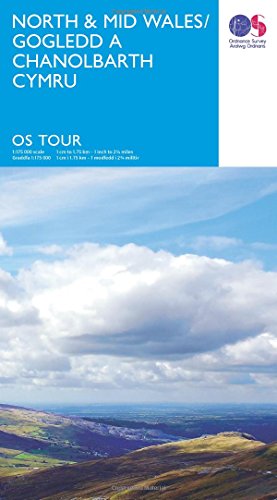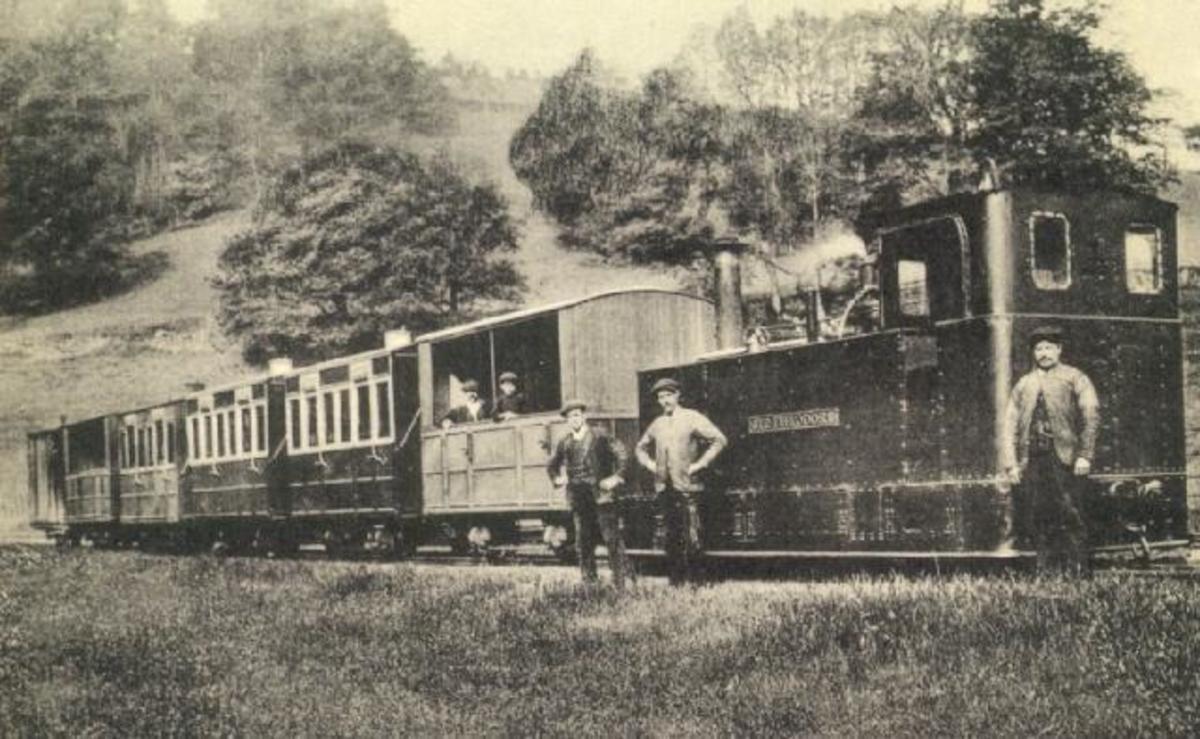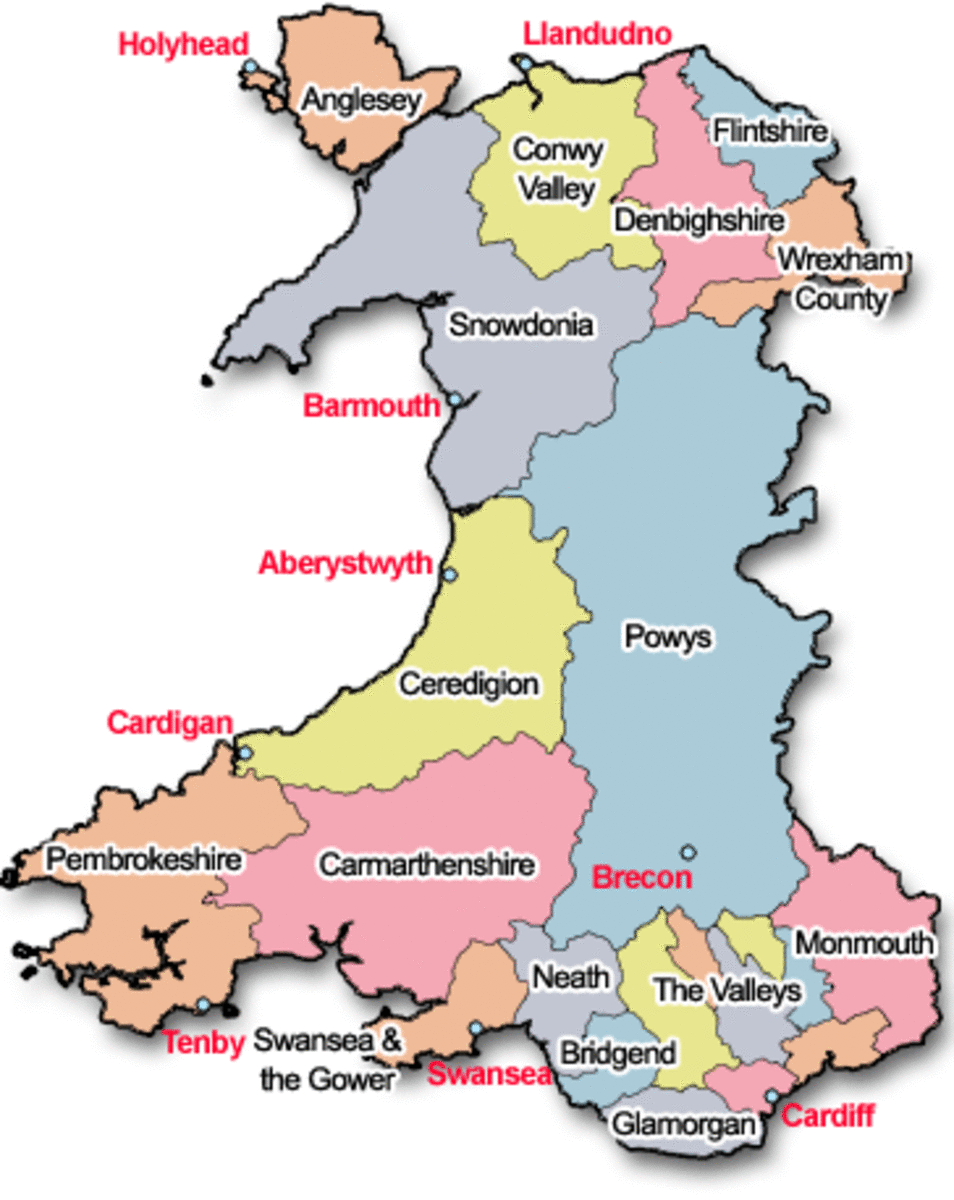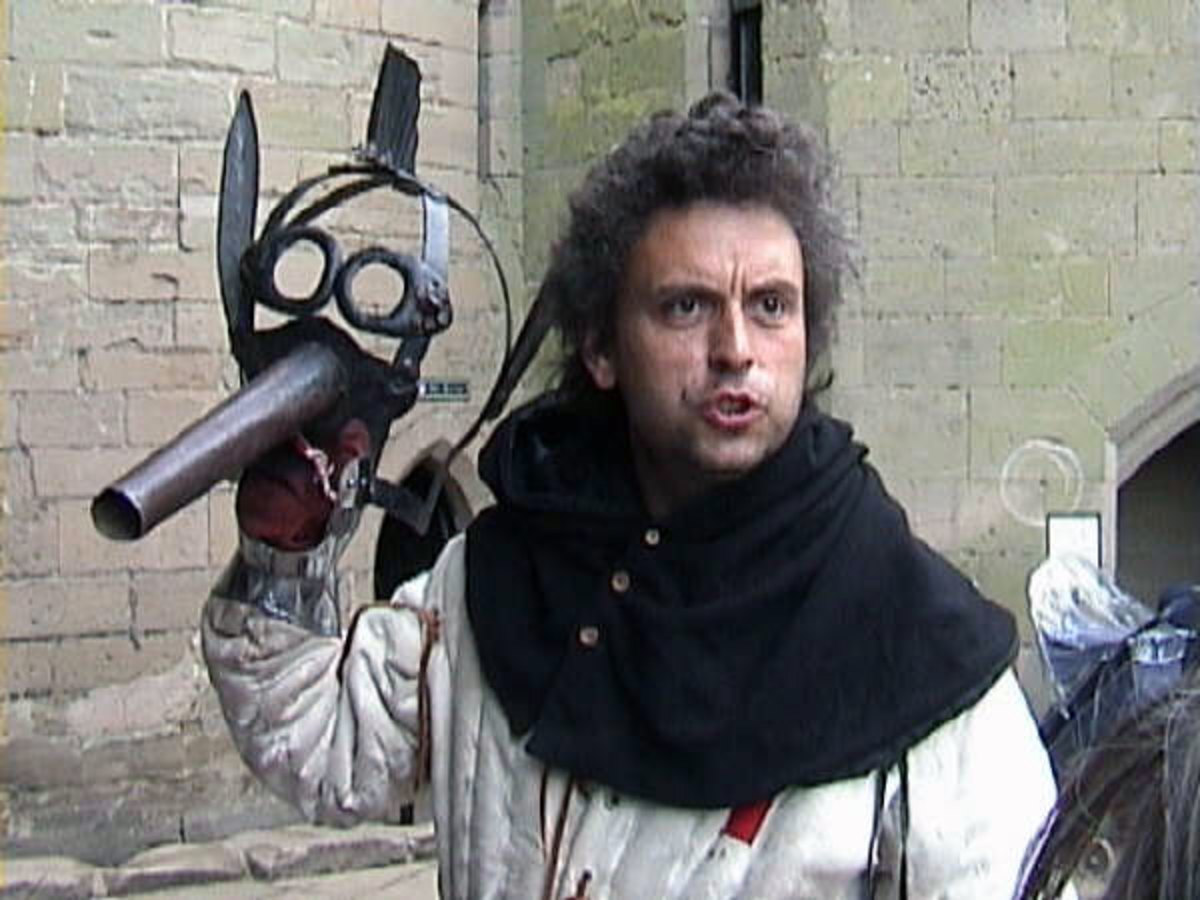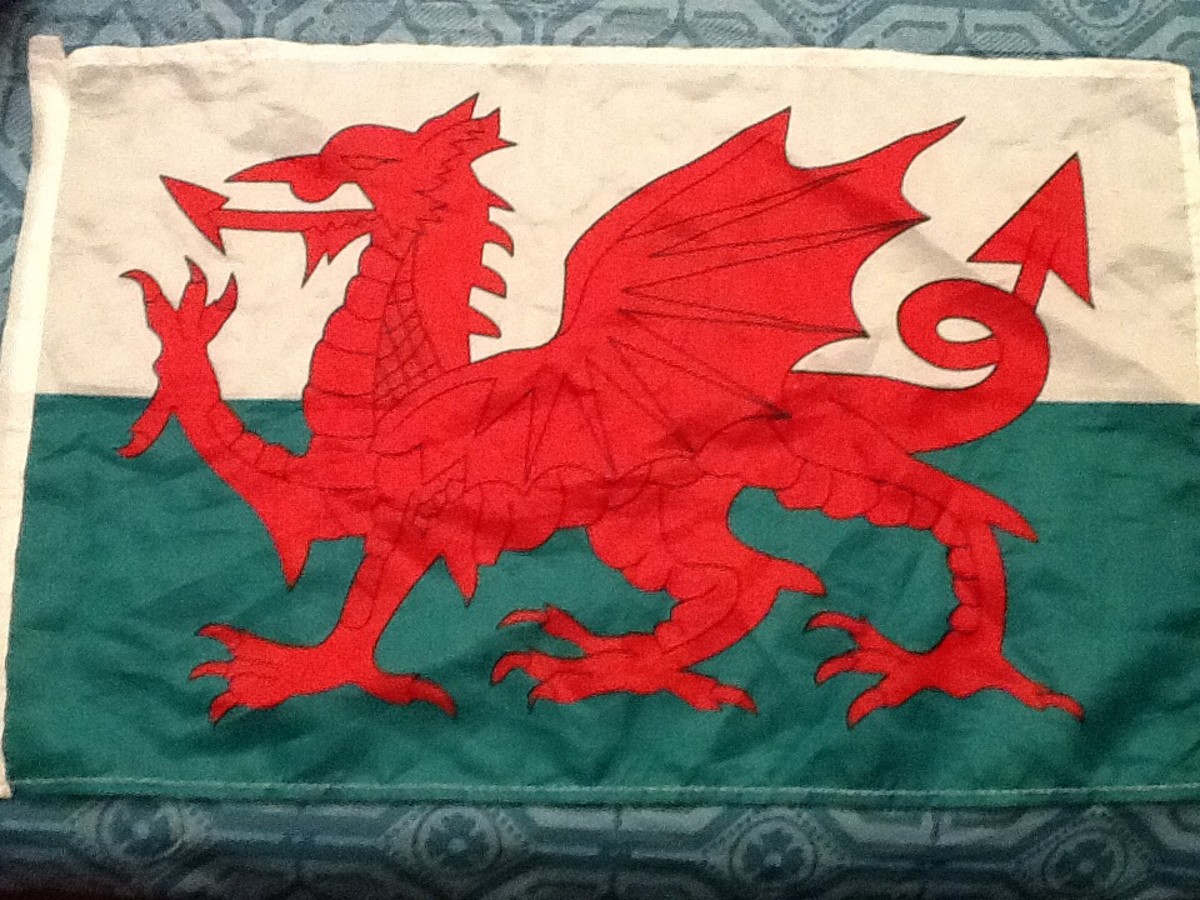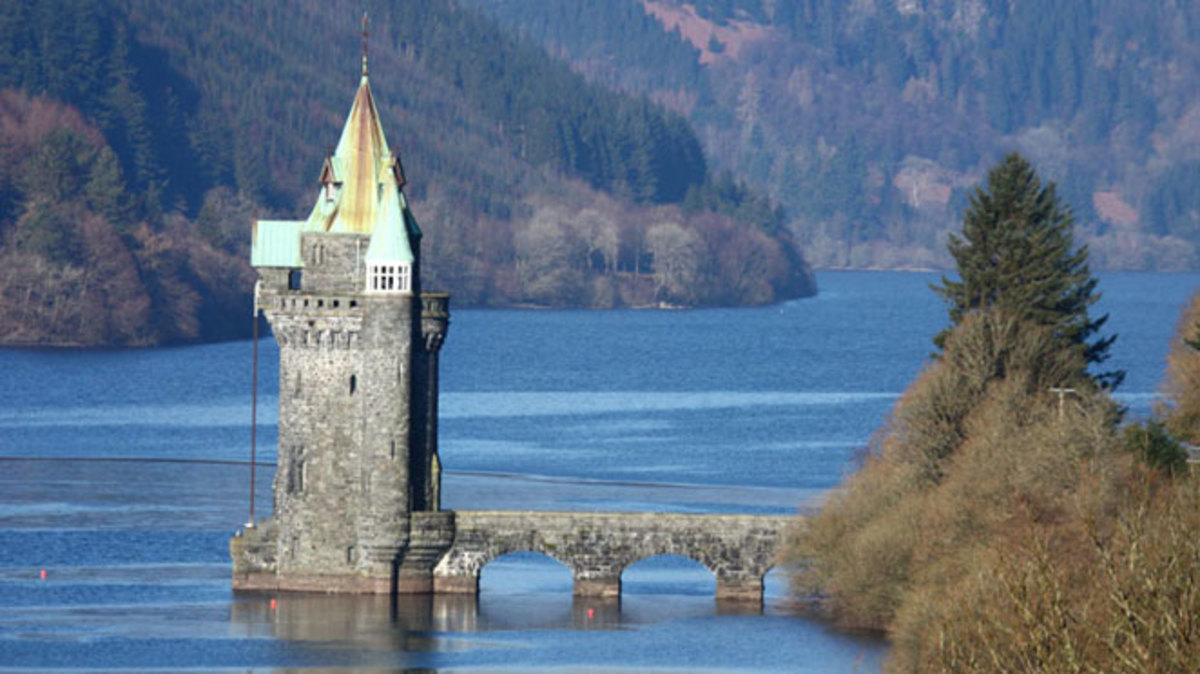- HubPages»
- Travel and Places»
- Visiting Europe»
- United Kingdom
North Wales Adventure
Portmadog with mountains in the background
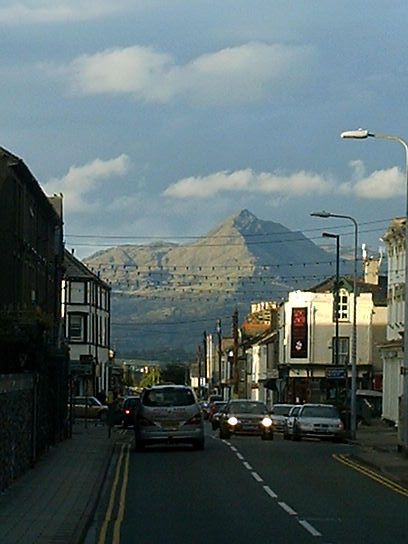
Portmadog
Back in the summer of 2008 the family, Hubby, dog and myself went on holiday to North Wales. We had been to Snowdonia several times camping and had enjoyed the natural beauty of the mountains. This time we wanted to see the history of the area and go to the Isle of Anglesey. We did this and so much more, here are some of the things we did and saw. I hope you enjoy reading about our holiday and maybe it might encourage you to visit North Wales. We stayed in the town of Portmadog, It was when entering Portmadog that I had my first of many WOWS, and that was the cob that carries the road, Ffestiniog light railway and cycle path. William Maddocks was the architect of the 'cob' at the town of Porthmadog which is in fact named after him. The 'cob' closed off the tidal flow to the large river allowing the port to flourish as a ship building centre in the 19th century. Although the road is often jammed with traffic the fact that the little steam trains run along by the road and the river the other side makes this an unique place.
Little train at portmadog
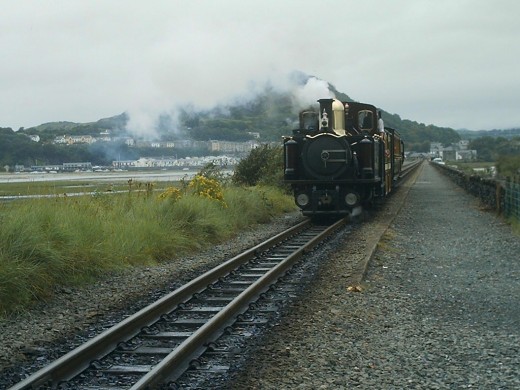
Ffestiniog Railway
The Ffestiniog Railway was built in 1836 as a means of transporting slate from the Salte quarries at Blaenau Ffestiniog to the coast at Porthmadog for export around the world by ship. I love steam trains, just watching them, I don’t know why, but seeing one of these little engines puffing up the cob is a sight I will never forget. In fact a small picnic site next to the cob became our regular supper time haunt. I don’t understand the science and technology of steam trains, so for any one that wants to know more click the link below.
Edward I built the castles in Wales
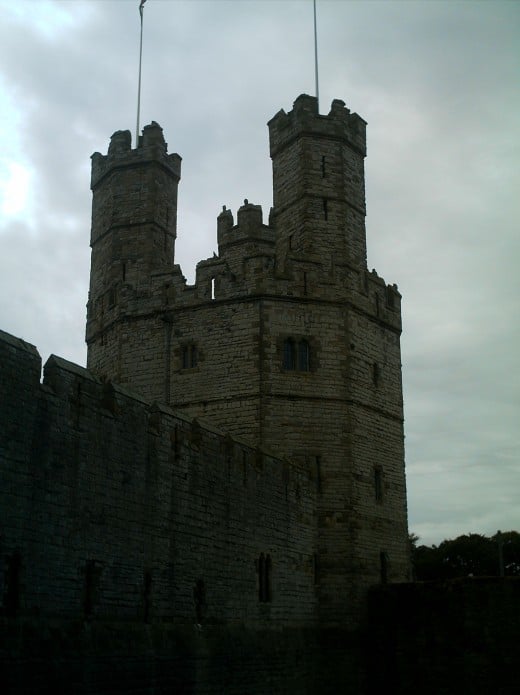
Conway castle
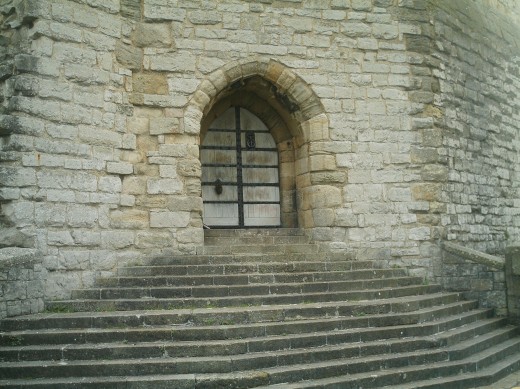
Castle tower and wall at Conway
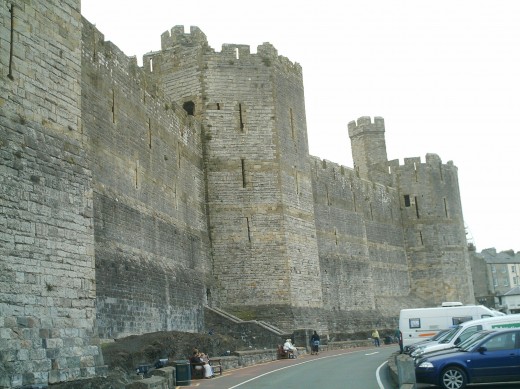
Caernavon castle
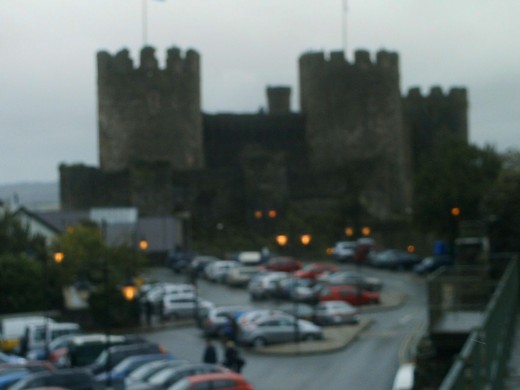
Welsh castles
The top of our ‘to do’ list was to visit the Welsh Castles. These date from the reign of Edward I, 17 June 1239 – 7 July 1307, who built a ring of castles, to subdue the welsh people. These castles are collectively known as the ring of iron. Edward I of England spent a great deal of time, and money ensuring that he held his new lands in Wales. He built major castles at Caernarfon, Cricieth, Harlech, Beaumaris, and Conway Most of these Edwardian castles have three concentric rings of walls and towers. The central space was kept as an open courtyard around which were clustered separate domestic buildings. The outer wall was ringed by a moat with access over a draw bridge through a separate gatehouse. The beauty of the Edwardian design is that the walls could be easily defended. The fortified towers built into the walls provided covering fire for each other. Defenders could provide cross-fire along the walls between neighboring towers. At Caernarfon and Conway Edward came up with a further innovation, Instead of a separate castle standing on a high point with the settlement spread out around it, the castle walls enclose the entire medieval town. So the castle walls are also the town walls. The man most responsible for Edward's Welsh castles was the architect James of St. George. James was a Savoyard (from modern Italy), and he incorporated elements in his design from Europe and the Middle East.
Conway castle
Built for King Edward I between 1283-87, its construction was overlooked by Master mason James of St George. ConwayCastle was constructed in conjunction with a new, fortified town. The idea of building fortified, purpose-built towns, were based on a combination of the Bastides of Gascony and the Burghs, or Burhs, built by King Alfred the Great of England. It took 4 years to build ConwayCastle, from 1283 to 1287 and it took 15,000 men to build it. ConwayCastle was protected by 8 towers. ConwayCastle was besieged by the Welsh in 1295. When Owain Glyndwr led a rebellion in 1403 the rebels captured ConwayCastle by trickery. Meanwhile walls were erected around the new town. They were 30 feet high and several feet thick. The walls were strengthened by 21 towers. There were 3 gates in the walls. It’s worth taking a walk along the castle walls to get the feel of the greatness of this fortification.
Caernavon castle,
Caernavon was constructed not only as a military stronghold but also as a seat of government and royal palace. Caernavon was seen as the capital of North Wales and became the English administrative centre. Its location, at the southern end of the Menai Straits, allowed for sea access between the north and western Welsh coasts. Edward's son, who became King Edward II, was born at Caernavon Castle and was the first Prince to have the title ' Prince of Wales' According to a famous legend, the king had promised the rebellious Welsh natives that he would name "a prince born in Wales, who did not speak a word of English" and then produced his infant son to their surprise Contemporary records note that the castle's construction cost some £22,000 – an enormous sum at the time, equivalent to more than a year's income for the royal treasury The best way to fully understand the magnificence of Caernavon castle is from the sea, so its worth going on the pleasure cruise that run regularly from the quay..
Harlech Castle
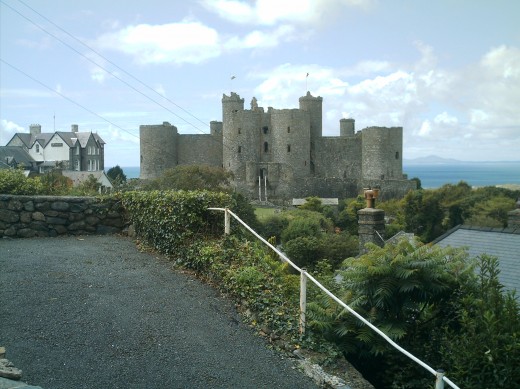
Beaumaris Castle
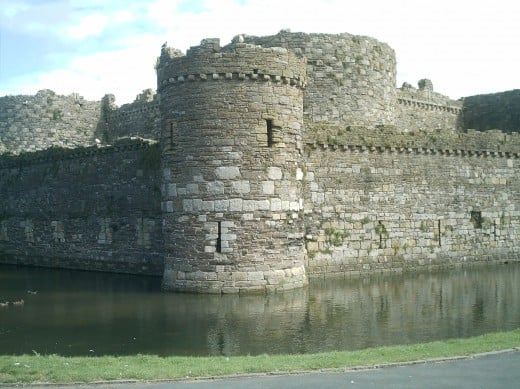
Criccieth Castle
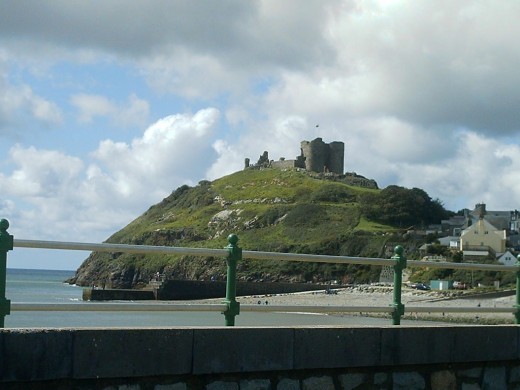
Harlech,Beaumaris and Criccieth Castles
Harlech was raised between 1283 and 1290 a feat of unbelievable endurance as the site of the castle is on a high hill protected on 3 sides by cliffs. To erect this fortress in just 7 years took an army of men over seen by James of st George. They came from far and wide. The castle's great glory is the massive, twin towered gatehouse, attackers who reach it, a stronghold in itself, must then penetrate its complicated series of gates, portcullises and loopholes. In 1404 Harlech castle was taken by Welsh leader Owain Glyn Dwr who proceeded to hold a parliament there
Beaumaris Castle
Beaumaris Castle on the Island of Anglesey is the great unfinished masterpiece of James of st George. It was the last castle in Wales to be built by Edward I around 1296. The intention was to build an impregnable fortress against the Welsh princes on the eastern side of the island, and to guard the MenaiStrait. It is the most beautiful castle in the most wonderful setting. The castle doesn’t dominate its surroundings like other castles, but blends in. Its gate house was based on the one at Harlech with many obstacles for an attacker to overcome, but the castle was never finished
Criccieth Castle
Criccieth Castle, built by Llewelyn the Great in the l3th Century. Originally a stronghold of the native Welsh princes, Criccieth was later annexed and added to by Edward I. Both sides obviously had a high regard for Criccieth's strategic position, on a rocky peninsula overlooking TremadogBay. The castle was taken by Edward's forces in 1283 and extensively refortified, which included adapting a tower for use by a catapult or stone-throwing 'engine'. The improvements were put to the test a decade or so later when the castle had to withstand a long siege by the Welsh, during which supplies were brought in by ship. Later in1404 when the Welsh leader Owain Glyn Dwr captured and burnt the castle (even today, the walls still bear evidence of scorching) the castle was left to ruin. However today Criccieth is a very romantic site, with the waves crashing at the cliffs below it does take much imagination to envisage the rebels storming up to its walls.
Britannia Bridge
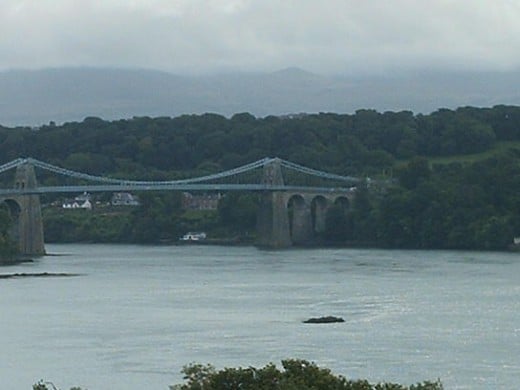
Where did we go?
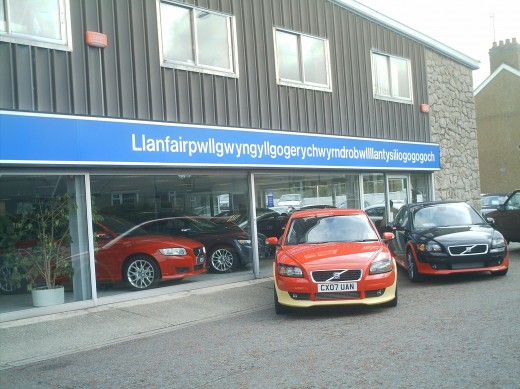
Our trip to Anglesey
Our trip to Island of Anglesey
To get to the Island of Anglesey and to visit Beaumaris castle, we had to cross the Menai Strait, a small but dangerous stretch of water that separates main land Wales and Anglesey The strait has two bridges - the main A5 road is carried over the strait by Thomas Telford's iron suspension bridge, the first of its kind, opened in January 1826, and adjacent to this is Robert Stephenson's 1850 Britannia Tubular Bridge. Originally this carried rail traffic in two wrought-iron rectangular box spans, but after a disastrous fire in 1970, which left only the limestone pillars remaining, it was rebuilt as a steel box girder bridge. When crossing the BritanniaBridge, you might like to look down to the right to see a house built on a small outcrop of rocks, right in the middle of the strait!
In places the strait is nearly two miles across but it narrows to little more than 200 metres where it passes underneath the two bridges. The differential tides at the two ends of the strait cause very strong currents to flow in both directions through the strait at different times, creating dangerous conditions. One of the most dangerous areas of the strait is known as the Swellies between the two bridges. Here rocks near the surface cause over-falls and local whirlpools, which can be very dangerous and cause small boats to flounder. It was once we reached Angley that we rewarded with a beautiful view back across the straits. Once in Anglsea we did a quick detour to Llanfairpwllgwyngyllgogerychwyrn-drobwllllantysiliogogogoch, I mean you just got to. I still can’t say it though I have learned that it means "The church of St. Mary in the hollow of white hazel trees near the rapid whirlpool by St. Tysilio's of the red cave".
Llandudno
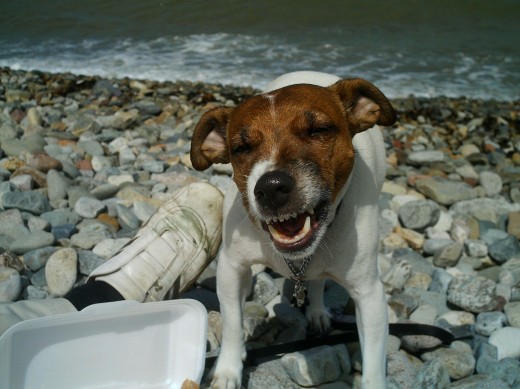
Llandudno
The trip to Llandudno was very picturesque we traveled along the coast road and into the wide Victorian roads of llandudno. The pier in llandudno is a splendid Victorian piece of architecture and the longest pier in wales. The beach and promenade are both wide with a lot of activities. Donkey rides and punch and judy shows feature most days. Llandudno lies on a peninsula between two notable carboniferous headlands, the Great Orme and the Little Orme. The geology, wildlife, archaeology and landscape of the Great Orme and little orme are of such importance that both headlands has been designated Special Areas of Conservation, a Site of Special Scientific Interest and a HeritageCoast. There is evidence of primitive man on both sights
Places to visit next time
- Live Puffin Cam
- Chester 360 - Welcome To The City of Chester, England. Visit Chester.
Chester 360. Photos of Chester. Chester information and places to visit - Virtual Portmeirion
Contains several online tours, hundreds of photographs, and a significant amount of information about Portmeirion, North Wales, a picturesque village of architectural follies created by Sir Clough Williams-Ellis.
A taste of North wales
Some of my hubs
- Visiting the west of England
Hopefully sometime in your life you are lucky enough to visit us here in the west of England. We have lots to offer, the Roman city of Bath, Brunels Bristol and mysterious Stonehenge. However as a...

